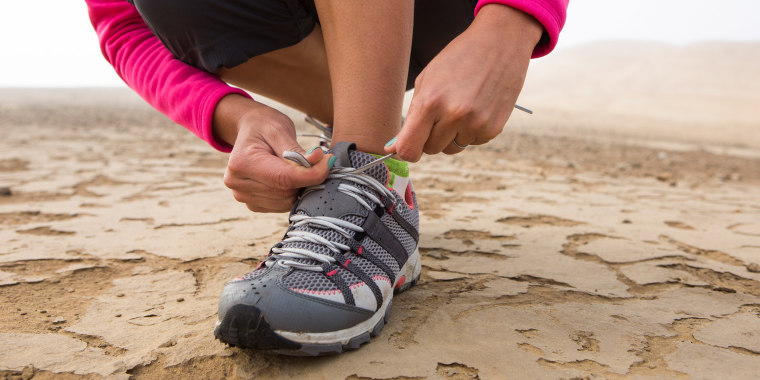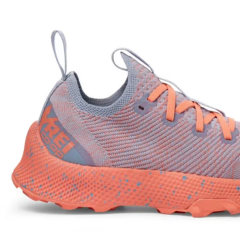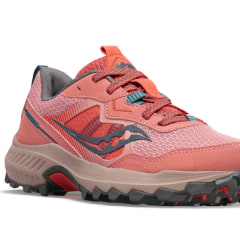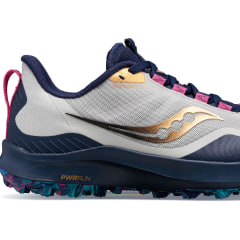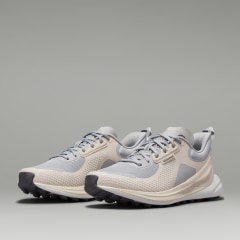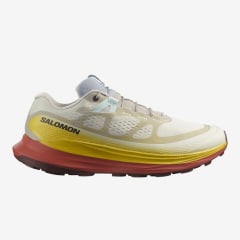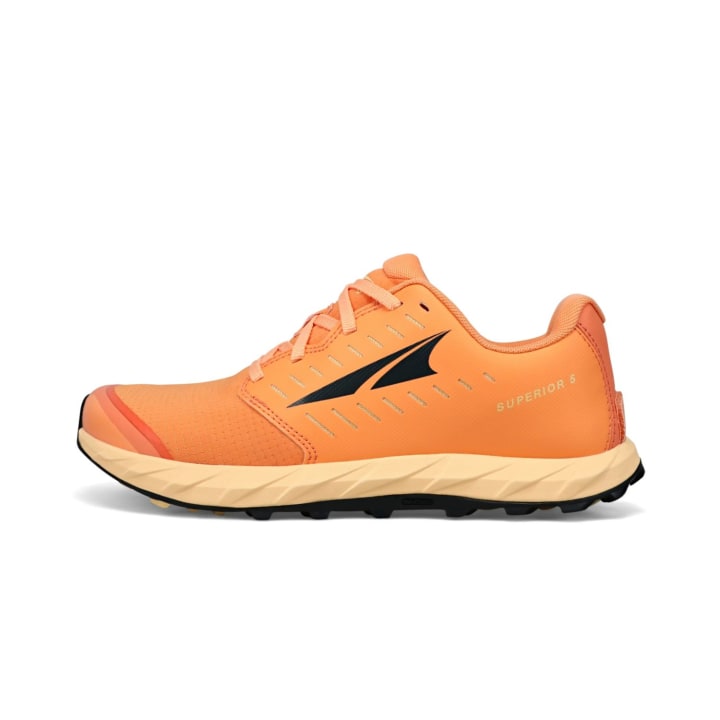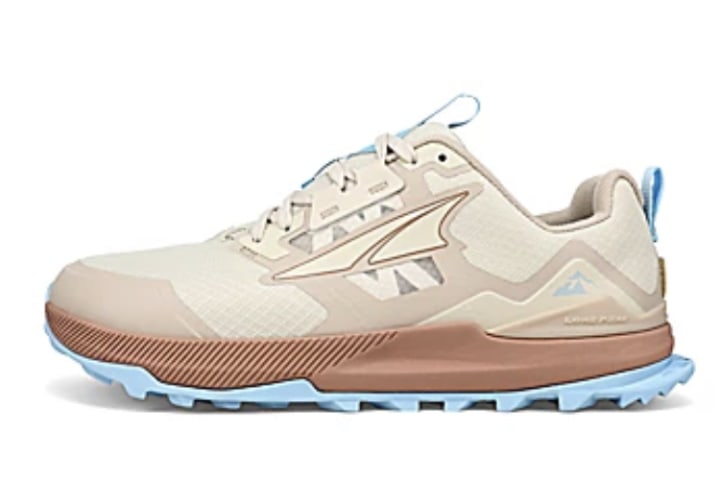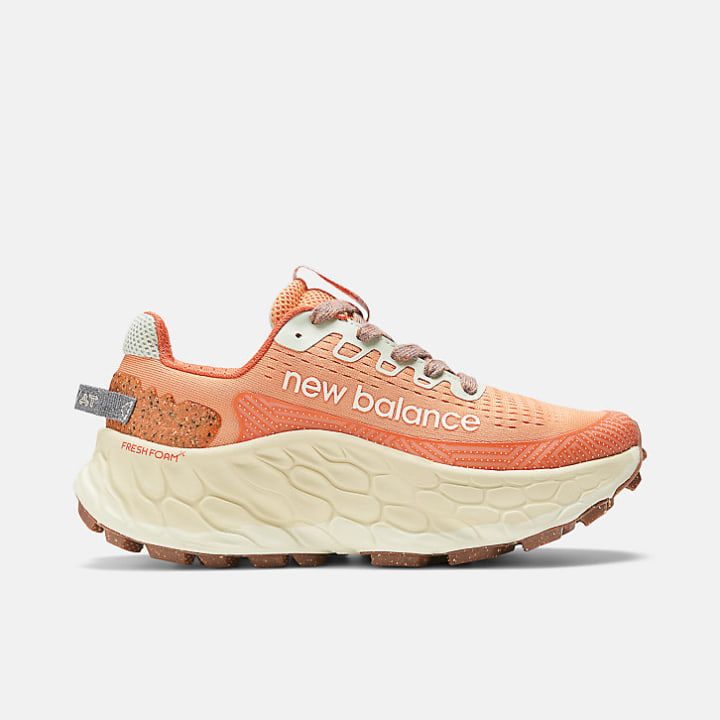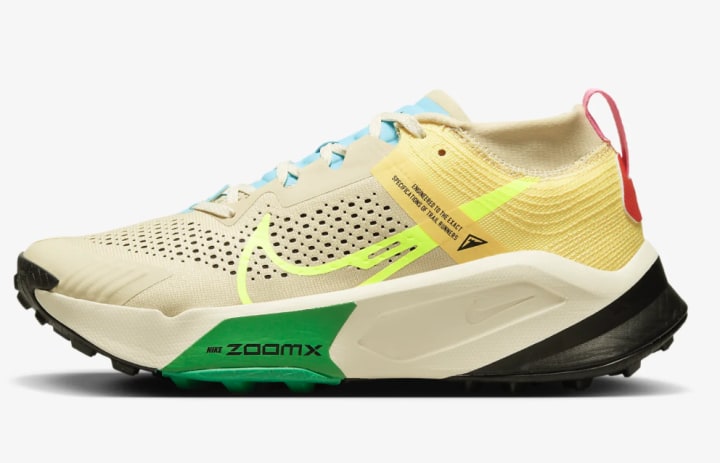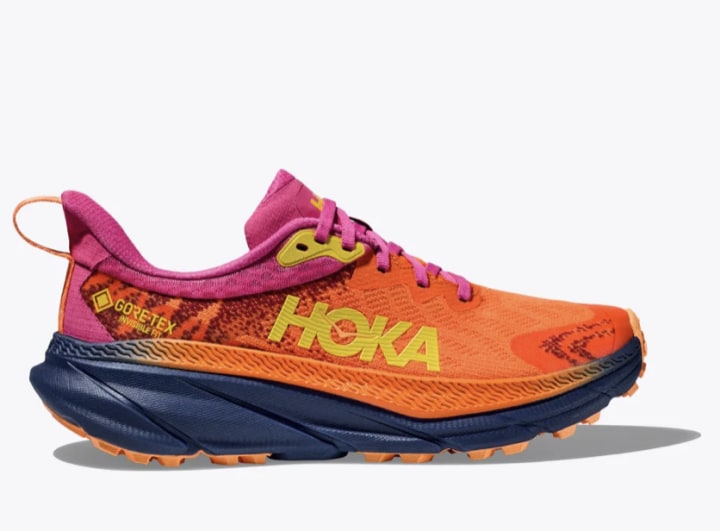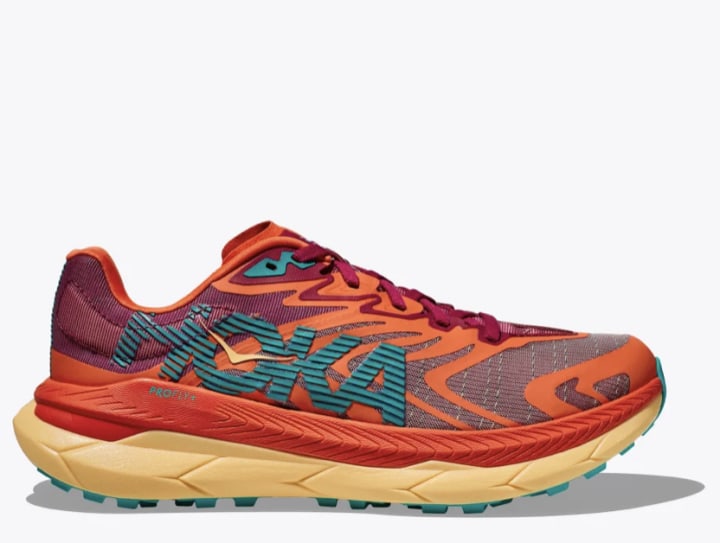It's no secret that purchasing a new pair of sneakers requires research, time and — more often than not — money. Affordable and durable pairs are hard to come by, oftentimes making them an investment that is sure to last you for a number of miles.
Whether you're finally purchasing the 'it' running sneaker all over TikTok or simply shopping for the perfect option that will aid you on your daily treks, trail running sneakers have been slowly but surely populating the sneaker space.
But what are they? How do they differentiate from regular running sneakers? And how can you confidently shop for one?
We spoke with Rebekah Broe, the director of product performance for Hoka; vice president of footwear for Helly Hansen, Kristofer Eidsgaard; and three members of a Colorado women's running club on the different features to keep in mind when shopping for trail running shoes, as well as how they differ from other sneakers.
What are trail running shoes? | How to choose a pair | Trail running shoes to shop | Meet the experts
What are trail running shoes?
Trail running shoes are sneakers that can be worn to exercise on different types of terrain, from gravel to paved roads, dirt and uneven paths. When compared to other sneakers, trail runners often incorporate more breathable fabrics and materials, as well as more friction and stability on the bottoms.
"You should consider getting a trail running shoe if you find yourself adventuring off-roads because they are specifically designed to provide support and stability to keep you protected" says Broe. "While a standard road running shoe may perform well on perfectly smooth trails, once you start to encounter lots of roots and rocks, you will be glad to have the support of a trail shoe."
How to choose a trail running shoe
There are two things to keep in mind when shopping for a trail running shoe (or any running sneaker for that matter): the fit and the drop.
The fit refers to how the shoe fits your foot. Are your feet wide (forcing you to size up), or are they petite and require you sizing down? Are they tight around the edges or loose near the ankle?
The drop refers to the difference in height between your heel and your toes. When a shoe says there is a 5mm drop, for example, that means that your heel is at 5mm and your toes are most likely at 0mm. When your feet are flat on the ground, they're at zero.
These are "individual preferences," according to Eidsgaard, who recommends visiting a specialized running store to find the right pair "that best fits your needs."
For Carol Clark, member of the Colorado Columbine Women's Running Club, there is a plethora of requirements a trail running shoe must have before deciding to purchase them.
"Grippy lugs, plenty of space in the toe box, a rock plate under the forefoot, the rubber sole needs to extend up over the toe and an extra grommet near the ankle for heel lock-in lacing," she summarizes, further noting that cushion has become a more important factor to her over time.
Trail running shoes to shop
Saucony Excursion T16 Trail Running Shoe
- Reviewers rank these shoes high in categories including comfort, style and quality.
- "They are true to size and provide great arch support."
- "Slippery on wet surfaces."
Colorways: 1 | Sizes: 6-11, including half-sizes | Widths: Medium | Key features: Cushioned footbed, foam midsole
For all-around comfort and coverage, this Saucony sneaker has got you covered. With padding at the tongue, collar and a cushioned footbed, blisters will be a thing of the past. The carbon rubber sole works to stabilize your feet during your run, and this shoe weighs 10.1 ounces, ready for you to take flight.
Saucony Peregrine 12 Trail Running Shoe
- "Super comfortable, sizing is exact."
- "Good grip in the sole."
- Reviewers note that this new, upgraded version is "drastically different" compared to old models.
Colorways: 3 | Sizes: 5-12, including half-sizes | Widths: Regular and wide | Key features: Made with lightweight recycled materials, has a rugged traction
This pair of Saucony shoes are Clark's go-tos when it comes to trail running because they meet "all of the requirements listed above. Plus, I can usually get a previous year's model at a decent price."
These shoes are available in both a regular and wide fit, three colors and a wide range of inclusive sizes. Saucony describes them as a light option with rugged traction for support on trails.
Altra Running Superior 5
- Easy to break in, "no blisters or discomfort."
- "Very comfortable and the toe box lets my feet move."
- "Quality is very inconsistent."
- Run small.
Colorways: 5 | Sizes: 5-12, including half-sizes | Widths: N/A | Key features: Incorporates six of Altra's trademarked design features, including cushioning, foam inserts and lugs on the outsole
With a whimsical bottom that resembles a paw, these trail running shoes are outfitted with a number of Altra's trademarked features, such as their Quantic foam, which is a lightweight foam that sits at the midsole, as well as Trailclaw, that features both jutted and conclave jugs for traction and preventing debris.
Lululemon Blissfeel Trail Running Shoes
- "Light as air."
- "Super sturdy"
- "Trail worthy"
- Not designed for wider feet
Colorways: 4 | Sizes: 5-12, including half-sizes | Widths: N/A | Key features: Includes a lower drop, compared to other trail running shoes, making users feel closer to the ground; more stable.
While these sneakers don't boast the same amount of height compared to other trail running shoes, that doesn't mean they skimp on comfort, durability and performance.
A "rugged," stable grip on the underside allows you to feel secure when running, without fear of tripping on pebbles and rocks. Plus, Lululemon notes that they easily transition from the road to the trail.
Salomon Ultra Glide 2 Trail Running Shoes
- "Functional and comfortable."
- "Durable," "Sturdy."
- Seams started to deteriorate after little use.
- Quicklaces are loose.
Colorways: 4 | Sizes: 5-11, including half-sizes | Widths: N/A | Key features: This lightweight shoe features the maximum amount of cushion this brand has to offer, making your runs feel more comfortable, especially on rocky roads
Melissa Hoskins, president of the Colorado Columbines Women's Running Club, believes there are four factors that go into selecting a trail running shoe that one should measure: "Durability, stability, grip and comfort."
With that in mind, Hoskins switches between these Ultra Glide shoes and Nike for her road shoes. This pair from Salomon is available in four colors, and the brand notes that it's best for two to three runs per week on mixed terrain.
REI Co-op Swiftland MT Trail Running Shoes
- "Great cushion while running."
- "Comfortable, attractive and versatile."
- "Blisters galore."
- Run small.
Colorways: 3 | Sizes: 6-11, including half-sizes | Width: N/A | Key features: Made with mostly recycled materials and provide extra security for your ankles thanks to the higher upper fabric
After selling this type of sneaker for years, REI decided to throw its hat in the ring and create their own trail running shoe. With a foot opening that resembles a sock (aka easy to slip on and off), this shoe also features moderate cushion, meaning your feet will feel supported on even the rockiest of roads.
Recycled elements make up this shoe, with everything from the shoelaces to the rubber on the bottom being made with at least some percentage of recycled materials. These sneakers also weigh a little under 1.3 pounds, meaning they won't drag you down.
Altra Lone Peak 7 Trail Running Shoes
- "Wider toe box" makes a difference.
- "The upper conforms nicely and the tread is reliably grippy."
- This upgraded version differs from the old design, with many reviewers loving the old design better.
Colorways: 8 | Sizes: 5.5-12, including half-sizes | Widths: Regular | Key Features: Altra notes that this is their bestselling trail shoe, most notably due to its ability to stabilize runners while on-the-go
This shoe features a plethora of Altra's trademarked features, including Altra EGO foam, meant to provide both comfort and support during your run and a MaxTrac outsole that pairs traction with grip to give you a stable run. Outfitted with mesh, they'll prove to be waterproof and breathable to battle against sweat and any creek you choose to skip over.
New Balance Fresh Foam X Trail Running Shoes
- Spacious toe box.
- "Great for over-pronation."
- "Quite elevated."
- "Noisy."
Colorways: 4 | Sizes: 5-13, including half-sizes | Widths: Standard, wide and extra wide | Key features: An upper mesh helps protect feet from puddles, increases breathability
New Balance's brand-specific Fresh Foam has a new life in these trail running shoes, which they've updated to provide a more cushioned and sustainable run.
Grooves on the side and bottoms of the shoe help prevent rocks and other debris from getting stuck, while a multi-layer midsole helps to make them more durable, according to the brand.
Nike Zegama Trail Running Shoes
- "Cushioned sole and adds a spring to my step."
- Provides "great arch support."
- "Very stiff."
- Runs small.
Colorways: 4 | Sizes: 5-12, including half-sizes | Widths: N/A | Key features: An increased height in the heel of the shoe provides an abundance of cushioning
For out-of-the-box, eye-catching designs and colors, opt for Nike's Zegama. A lightweight yet heightened midsole helps to cushion your strides as you make your way through dirt paths, and the lug pattern on the bottoms help to grip the ground and ensure traction as well.
Hoka Challenger 7 GTX
- "Ridiculously comfortable and light."
- Not true to size; run big.
- Regular and wide options have different color options; not consistent.
Colorways: 3 | Sizes: 5-12, including half-sizes | Widths: N/A | Key features: This lightweight trail runner provides "plush" cushion, protecting your feet and knees during runs
A well-known and loved brand, Hoka's trail running shoe features a platform stack that sits higher than the last edition of these shoes (now offering more plush cushioning than before). From the fabric to the shoelaces, this shoe is made out of recycled materials.
Crafted with GORE-TEX, the brand promises fast drying times — perfect for running on hiking paths and through puddles. They're also ultra light, weighing in at exactly seven ounces.
Hoka Tecton X 2
- "These shoes propel you and are super speedy."
- " Nimble enough for root-bound wooded trails and responsive on mushy sand."
- Splurge option.
- Debris gets caught in the undersole, according to one reviewer.
Colorways: 3 | Sizes: 5-11, including half-sizes | Widths: N/A | Key features: Carbon fiber plates help this trail running sneaker stand out among the rest, which helps to ensure that the shoe isn't flimsy or unstable
These trail running sneakers are Gayle Zorilla's favorite, another member of the Colorado Columbines Women's Running Club. Depending on what she's training for, Zorilla will usually log about 25 to 40 miles per week, ranking up to about 300 miles per pair of shoes.
These have become her favorite because "they are lightweight, cushioned, have adequate and effective tread and they give me a "push off" feeling as I run in them yet they are not bulky as some prior Hoka models have been," she mentions.
Meet the experts
- Carol Clark, Melissa Hoskins and Gayle Zorilla are three of the 140 members of the Colorado Columbines Women's Running Club. Members of this group have run everything from ultra-marathons to 5k's, on every type of terrain, from paved roads to dirt paths.
- Rebekah Broe is the director of product for performance footwear at Hoka. She's hands-on in the process of creating new shoes and ensuring customer feedback is heard within new products.
- Kristofer Eidsgaard is the vice president of footwear for Helly Hansen, an outdoor apparel company that specializes in gear meant to take on the elements.
